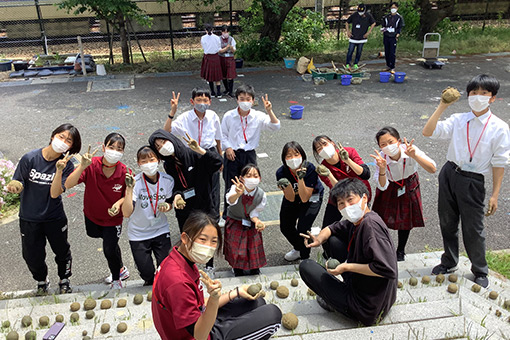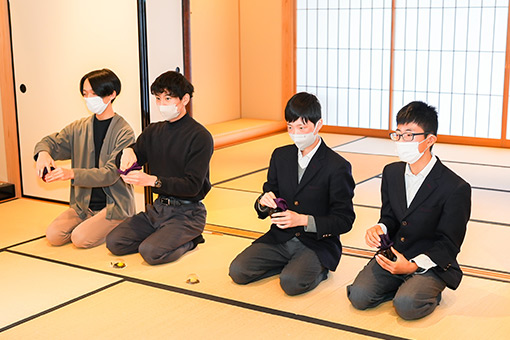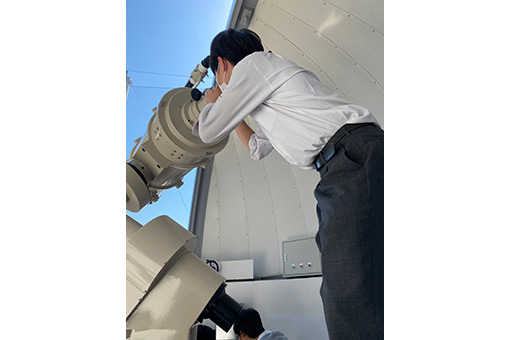Educational Features Research

Turning curiosity into a driving force for learning
Research and inquiry skills are built up over six years of study.
In junior high school, students enjoy learning the basics of inquiry with their peers and hone their skills while cultivating cooperative skills. As students transition to high school, under high school and university collaborative education, they begin to tackle problems and develop the ability to investigate on their own.
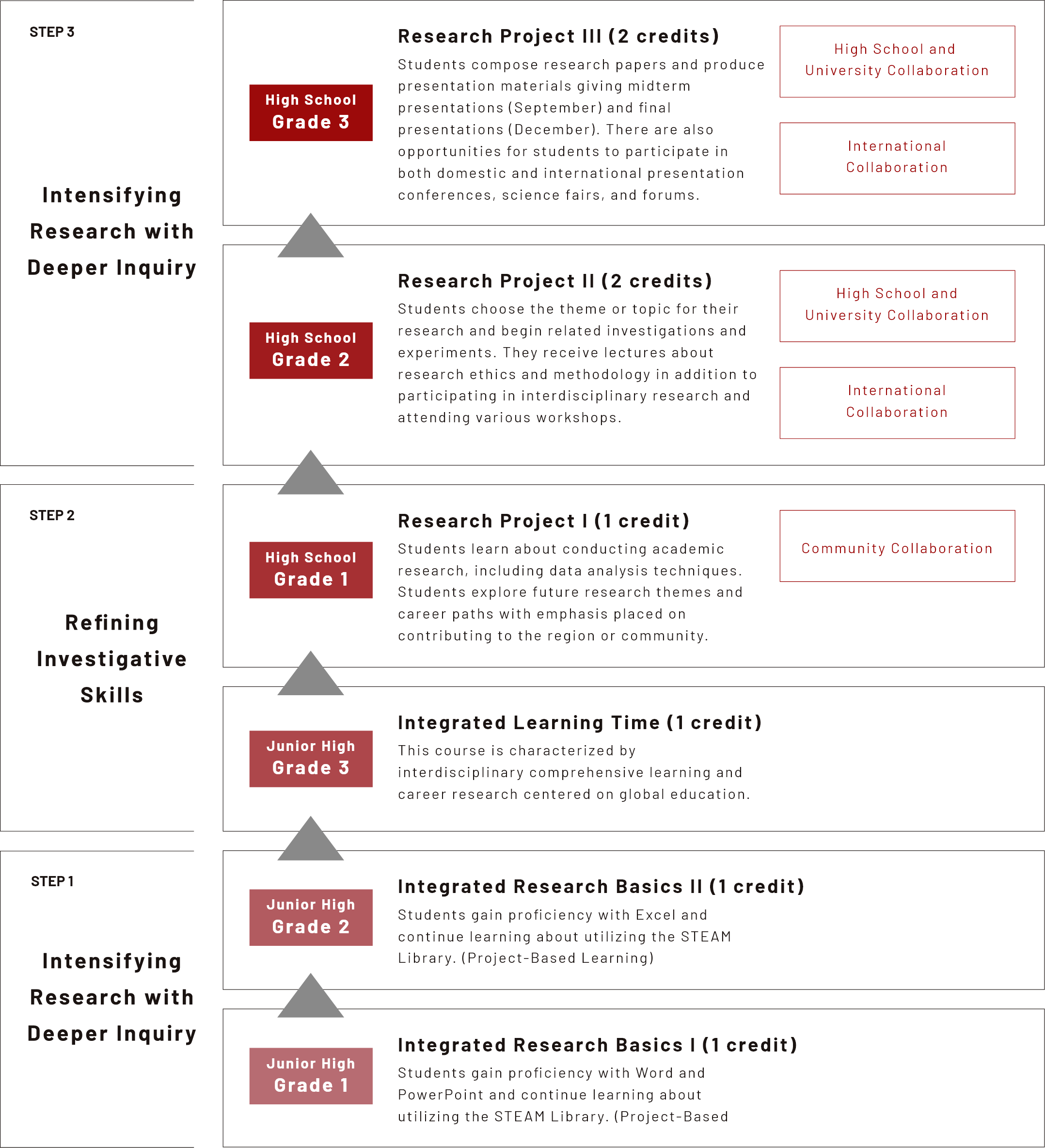
Research Proficiency by the Numbers
Number of students
engaged in international
joint research projects
36
Research Themes
Science and Mathematics96
Humanities and Social Sciences52
International34
Number of students
who wrote research
papers in English
73
A Program that Cultivates Inquisitiveness
Junior High School Grade 1: General Research Basics I
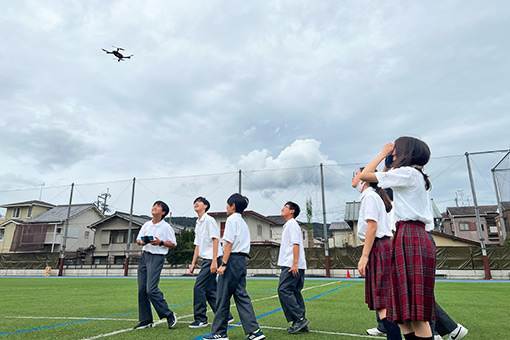
The theme of this course is “Learning the fundamentals of research in a fun way.” This is an opportunity for students to learn by facing repeated challenges with their peers using both iPads and computers. In addition to gaining experience with applications such as Word and PowerPoint, students also gain experience editing images and videos. Students choose a theme related to STEAM (Science, Technology, Engineering, Arts, and Mathematics) and conduct mini-research projects in groups to develop their collaboration and presentation skills. Students also get to handle equipment such as drones for the first time. In the second semester, students present their independent research in class, receive advice from teachers, and work to further brush up their skills.
Junior High School Grade 2: General Research Basics II
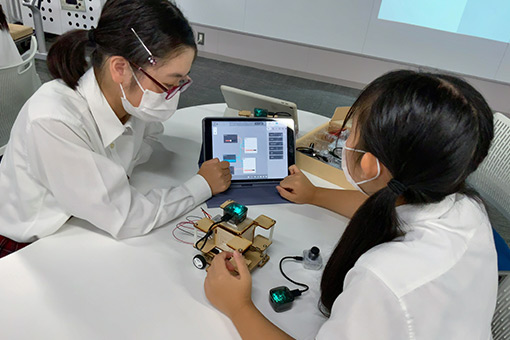
Continuing with the first year’s theme of “Learning the fundamentals of research in a fun way,” student further develop their inquiry skills utilizing iPads and computers. Students will use Excel in addition to increasing their use of Word, PowerPoint, video editing, and other applications from the previous course. This will enable them to improve their ability to present data in various graphs and charts during presentations. In addition to group mini-explorations on STEAM-related topics, students will also learn the basics of programming using robots and conduct creative activities with 3D printers (tentative plan).
Junior High School Grade 2: Peace Study (Okinawa Peace Training Pre-Study)

Second year junior high school students visit Okinawa in their third semester to learn about peace. As part of the preparation for the Okinawa Peace Training, each student sets a theme related to peace and conducts a research study during summer vacation. Presenting the results of their research and learning from each other enables students to participate in the Okinawa Peace Training with increased awareness. Based on what they learn in the field, students will conduct post-study activities and think about what each of them can do to create a peaceful society.
Junior High School Science Poster Session Contest
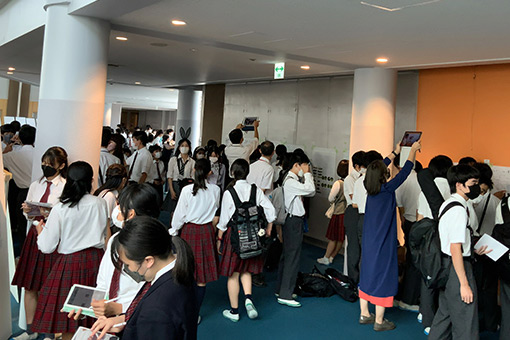
This is a science presentation that has been held at Ritsumeikan Junior High School for about 20 years. Students conduct independent research during summer vacation with two to three outstanding works being selected from each class. Each of the chosen students summarizes their work into a large poster to be presented in a poster session format. All middle and high school science teachers serve as judges, with select posters receiving recognition for their excellence and scientific merit. By reviewing each other's research, students can further develop their spirit of inquiry and inquisitiveness.
High School Grade 1: Research Project I (Nagaokakyo Project)
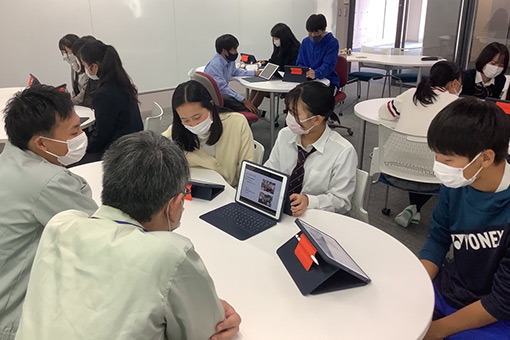
In the first year of high school, students in the core course conduct research activities about Nagaokakyo City with the cooperation of Nagaokakyo City Hall. Each division of the city hall introduces actual issues that Nagaokakyo City is facing, and students work on finding solutions to the issues in groups by collecting data and conducting fieldwork. They then summarize their findings into proposals to be presented at in-class presentations. Class representatives then present their findings to the mayor and other city officials.
Example Themes:
- Easing the Labor Shortage in Nursing Care by Appealing to Younger Generations
- Utilization of Igenoyama Kofun Park
- How can we make the most of Nagaokakyo City's charms and enliven the Nagaokakyo Grasha Festival?
- Promoting Greening of Parks and Environmental Beautification Activities Through the Green Supporter System
- Considering Ideas and Ways to Raise Awareness of Gender Equality
High School Grade 1: Research Project I (SDGs Future City Fieldwork)
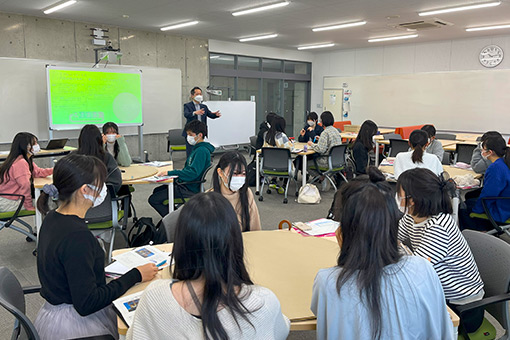
As an extension of the Research Project I class, first-year high school students with an interest in urban planning, social issues, and sustainable development goals (SDGs) can take part in this fieldwork. In 2022, students visited Toyama City, which is attracting attention from all over the country with its slogan of becoming a "compact city" to hear directly from experienced staff at Toyama City Hall and professors at Toyama University about the future of urban planning. It was an opportunity to learn and think deeply while receiving hands-on experience.
High School Grade 2: Project Research II (Elective Courses)
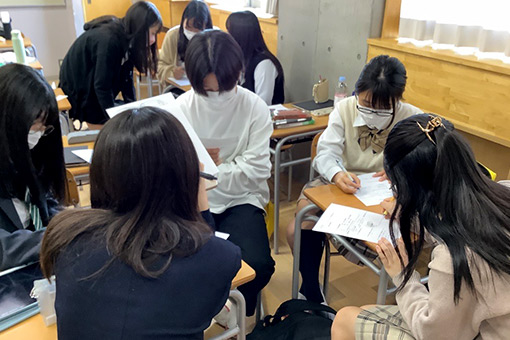
In Research Project II (CE, SS, and GL Courses) second-year high school students at last set their own themes and begin research projects based on the basics of problem awareness, critical thinking, and teamwork learned in the first year of high school. In the first half of their second year of high school, students are given the opportunity to choose from a wide range of courses to acquire specific knowledge and skills that interest them. In the second half of the year, each student joins a seminar hosted by a highly specialized teacher and engages in research activities relevant to their own theme.
High School Grade 3: Research Project III (Presentation of Results and Conclusions)
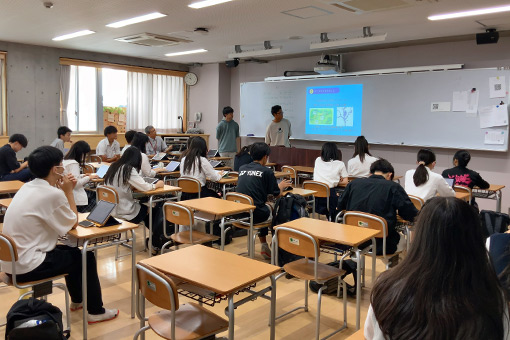
In Project Research II (CE, SS, and GL Courses) third-year high school participate in seminars hosted by highly specialized teachers and carry out investigative research activities on their own themes, just as they did in their second year of high school. Activities can be done during lunch breaks, after school, or during long vacations. After the midterm presentation in September and the final presentation in December, the results of research projects will be summarized in the form of a research paper. Presentations may also be given at various academic conferences (junior sessions) and contests. Second and third-year high school students both have two periods of research time, so even if they are involved in pursuits such as club activities, they can be fully engaged in research related activities.
High School and University Collaboration
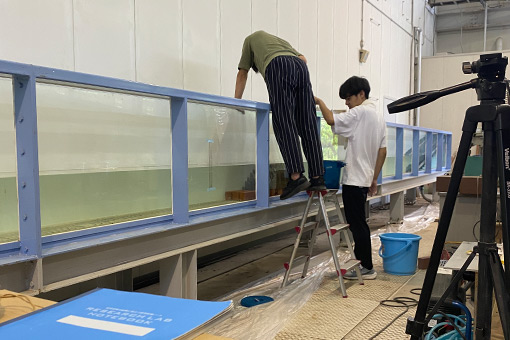
While working on research projects, depending on the theme, students can receive advice from professors at Ritsumeikan University or Ritsumeikan Asia Pacific University. If necessary, it is also possible to borrow experimental equipment from Ritsumeikan University to collect data. Additionally, students can also obtain remote support from Ritsumeikan University using a space sharing system. It is possible to conduct specialized research.
International Joint Research Projects
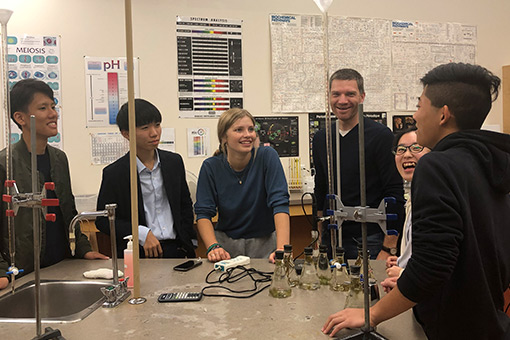
Second and third-year students in the SSG classes are encouraged to form groups with high school students from overseas to work on international joint research projects. In international joint research projects, all communication is conducted in English including group meetings, deciding themes, planning, data collection and analysis, and presentations. The know-how gained from conducting international joint research projects with overseas students from different cultures and backgrounds is presented through the "Symposium on the Internationalization of Science Education" hosted by our school.
Participation in Contests and Academic Conference Junior Sessions
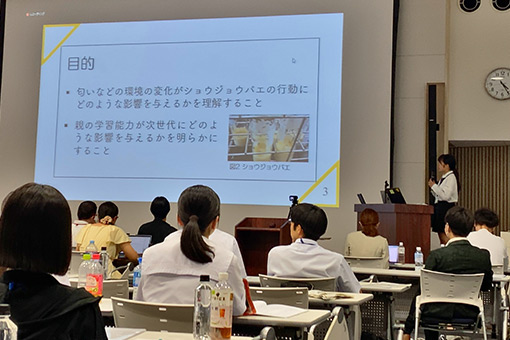
Students with outstanding research and initiatives participate in the junior sessions of academic conferences, submit their work to competitions, and win awards each year. Students further brush up their content by obtaining advice from university experts.


Research Facilities Introduction (Research Project Laboratory)
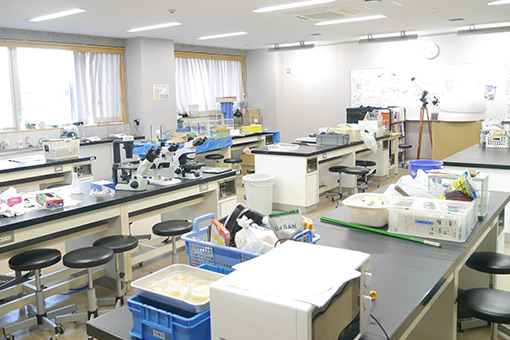
One of our school's 10 science laboratories is the Research Project Laboratory, a laboratory dedicated to topic research. Here, students are free to use equipment and equipment to work on various research projects, mainly during lunch breaks and after school.
Research Facilities Introduction (Space Sharing System)
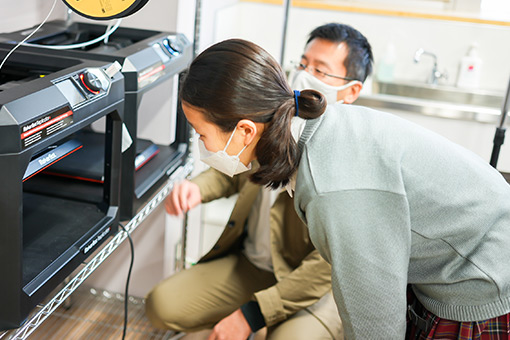
This is a facility that connects online with the AIOL Laboratory located at Ritsumeikan University's Biwako-Kusatsu Campus (BKC). There are also 3D printers and other crafting equipment, allowing students to design and build their own laboratory equipment for use in their research projects. In addition, students can interact with BKC staff through the screen to receive instantaneous feedback and advice.
Saturday Box: Tickling Curiosity

Saturday Box is a learning space for teachers to offer courses they would like to try and for students who are excited about them to gather. There are no barriers between middle school and high school students, and students can choose to study what they are interested in and decide what they want to challenge themselves at and participate in, without being bound by tests or grades.
Examples of Saturday Box Courses
Mud Ball Research Institute/Let’s try using an astronomical telescope!/Laboratory for Architectural Challenges/Enjoying Seasonal Japanese Sweets/First Aid Course/Let’s learn with 3D printers!/The World of Board Games/Fishing in the Obata River/Theme Park Psychology/Gundam Assembling Club/Let’s eat nagashi somen noodles with Nagaokakyo bamboo!/Competitive Karuta/Let’s do pitch training♪!

